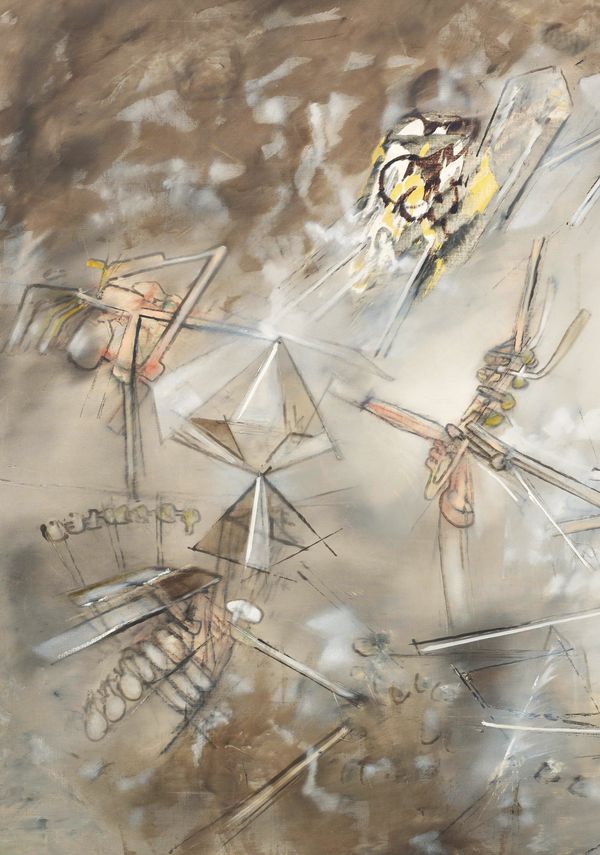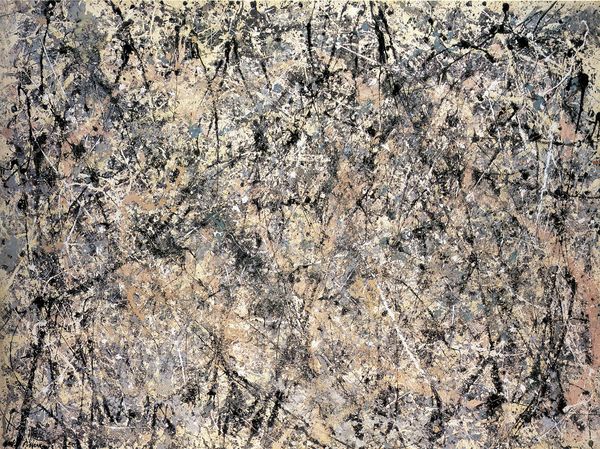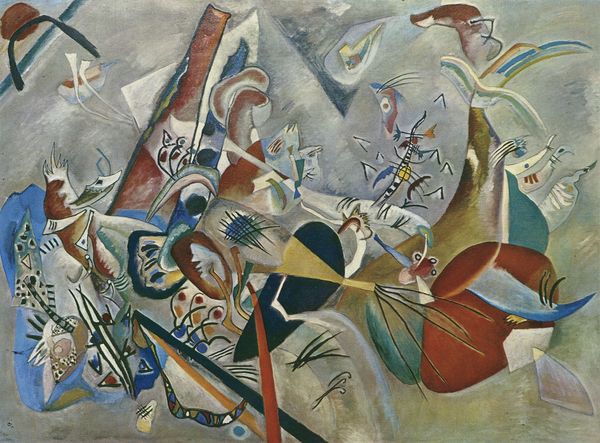Matta Panarea Jazz, 1959
A picture is not a canvas on the wall, it is the impact that hits the bull's eye of your mind.
—Matta
Roberto Matta Echaurren, born in Chile in 1911, began his meteoric career in the late 1930s, pioneering a novel brand of Surrealism that contributed to the expansion of the movement worldwide.
In 1935, Matta moved to Paris after graduating from the School of Architecture of the Universidad Católica in Chile and worked for the studio of modernist architect Le Corbusier until 1947. He assisted Le Corbusier with a series of projects, including that of the Ville Radieuse, and traveled extensively throughout Europe. During this period, Matta experienced a series of formative events and met notable figures, who would convince him to abandon his career in architecture to become an artist. First introduced to Surrealism by Gordon Onslow Ford, Matta became greatly influenced by the works of Marcel Duchamp and had the opportunity to work on the construction of the Spanish Pavillion at the International Exhibition in Paris, where Picasso was finishing his masterpiece Guernica in 1937.
In 1936, Matta began his foray into Surrealist drawing, producing a body of work that Onslow Ford once described as "the most extraordinary landscapes, full of maltreated nudes, strange architecture and vegetation." The impression caused by these drawings led to an invitation to participate in André Breton's seminal Exposition Internationale du Surréalism in Paris in 1938. These early works reflected a deep understanding of the Surrealist objective, in which Matta depicted unseen realities from the world of dreams. He was preoccupied with the limitations of visual perception and Duchamp's idea of "passage" that alluded to a psychic transition from one state to another. Matta filled these drawings with transparent veils of color, seemingly bound by an elusive sense of gravity. His use of lines and planes also indicate a preoccupation with the flow of time and space.
Detail of Matta Panarea Jazz, 1959
This period of intense draftsmanship led to Matta's famous Physchological Morphologies, which Sabine Eckmann aptly describes as "a fusion of the psychic and the physical that refers to the idea of interior landscape." He began populating his paintings with semi-geometric and biomorphic forms—reminiscent of Yves Tanguy—that presented the visual equivalence of various states of consciousness, including conception, gestation, birth, life and death. He also made continual reference to micro and macroscopic nature and the infinitesimal through imagery of cell membranes, reflecting a cosmic totality that was representative of both man and earth.
By the mid-1940s, Matta's work shifted with the inclusion of what he would refer to as vitreurs, or people made of glass. These transparent creatures evoke the notion of invisible beings that emerge as "embodiments of the technological forces that control man [also in relation] to the tarot card." These abstracted figures evince Matta's new obsession with the occult and the paranormal. During World War II, his palette became much more somber and the size of his paintings increased significantly as a personal response to his concerns with the devastating events taking place in the world.
In the 1950s, Matta shifted towards social morphologies that reflect a growing involvement with the human condition in the external world. His style during this period was abstract and included planar, geometric shapes and swirling lines alongside his signature biomorphic figures. These works were intended to challenge viewers and address the issues raised by the impact of technology on the human experience. Sexuality and erotic iconography were present in many of these paintings, and throughout the rest of his oeuvre, presenting a commentary on some of the major issues of modern society, human freedom and sexual strife.
Jackson Pollock Number 1, 1950 (Lavender Mist), 1950. National Gallery of Art, Ailsa Mellon Bruce Fund, Washington, D.C. © 2017 Pollock-Krasner Foundation / Artists Rights Society (ARS), New York
Wassily Kandinsky Dans le gris, 1919. Collection Nina Kandinsky © 2017 Artists Rights Society (ARS), New York / ADAGP, Paris
This particular lot, Panarea Jazz, is a milestone that unveils the different stylistic phases of Matta's oeuvre. Viewers are presented with a landscape inhabited by abstract humanoid figures, permeated by swirling lines and bold geometric shapes. The somber-yet-luminous palette evinces a passage between two different psychological stages of the artist, evincing ties to both Surrealism and the Abstract Expressionism of Jackson Pollock.
As with many of Matta's paintings, Panarea Jazz shows a fundamental investigation into the possibilities of wordplay. Born in South America but spending most of his adult life between Italy, London and France, Matta was fluent in Spanish, Italian, English and French. This deep understanding of language combined with Matta's dedication to psychic automatism—a Surrealist term referring to the process of creating art without conscious thought—led the artist to title his works in playful and intellectually curious ways. The title of this work, Panarea Jazz, simultaneously refers to the Italian island of Panarea while also referencing the Spanish word "panera" meaning breadbasket. A breadbasket, where many things are mixed together, indicates both Matta's own cultural background as well as the jumbled landscape of the unconscious mind.
"Jazz," on the other hand, alludes to the American genre of music known for its improvisation quality, linking the work's dance-like composition to Wassily Kandinsky's explorations of painting’s lyrical qualities. By combining elements from different fundamental phases of Matta's prolific career, Panarea Jazz embodies the artist's extraordinary contribution to modern art across time as well as continents and national borders.



